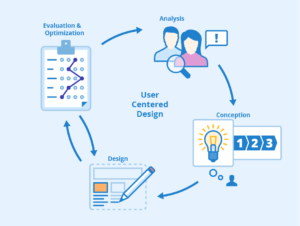SEO Doesn’t Have to Be Scary – Shifting from a Reactive to Proactive Strategy

SEO Doesn't Have to Be Scary - Shifting from a Reactive to Proactive Strategy
Introduction
Search Engine Optimization (SEO) has a reputation for being a mysterious and ever-changing field. For many, it’s viewed as a daunting task, one that’s driven by reaction rather than proactivity. However, in this blog post, we’ll explore how embracing a proactive SEO strategy can demystify the process and yield more consistent and sustainable results, all while reducing the fear factor often associated with SEO.
The Reactive SEO Dilemma
Many website owners and digital marketers find themselves trapped in the cycle of reactive SEO. In this approach, SEO efforts are often driven by quick fixes, algorithm updates, and chasing trends as they emerge. While reacting to changes is essential, relying solely on a reactive strategy can lead to several challenges:
- Inconsistency: Reactive SEO can result in a haphazard approach, with efforts directed wherever the latest SEO “fire” needs to be put out. This lack of consistency can hinder long-term progress.
- Short-Term Focus: A reactive strategy often prioritizes short-term gains, such as exploiting trending keywords or taking advantage of algorithmic fluctuations. While these tactics can yield immediate results, they may not lead to sustained success.
- Vulnerability to Algorithm Updates: Relying on quick fixes can leave your website vulnerable to search engine algorithm updates. When major algorithm changes occur, sites that haven’t maintained a strong foundation may see sudden drops in rankings.
- Missed Opportunities: A reactive approach may overlook opportunities for strategic growth and overlook the importance of user experience, content quality, and technical optimization.
SEO Strategy
Shifting from a reactive to a proactive SEO strategy involves a change in mindset and approach. Here’s how to make the transition:
-
Comprehensive SEO Audit:
Begin with a comprehensive SEO audit of your website. Identify areas for improvement, including technical issues, content gaps, and user experience shortcomings.
-
Set Clear Goals:
Establish clear and measurable SEO goals. Define what you want to achieve, whether it’s improving organic traffic, increasing conversions, or expanding your online presence.
-
Keyword Research:
Conduct thorough keyword research to identify valuable keywords relevant to your industry and audience. Prioritize keywords with high search volumes and strong user intent.
-
Content Strategy:
Develop a content strategy that focuses on creating high-quality, valuable content that resonates with your target audience. Content should address user needs and provide solutions to their problems.
-
Technical Optimization:
Invest in technical SEO to ensure your website is well-structured, fast-loading, and mobile-friendly. Fix any technical issues that may hinder your site’s performance.
-
User Experience (UX):
Prioritize user experience by improving site navigation, reducing page load times, and making content easily accessible to users. A positive UX can enhance engagement and conversion rates.
-
Link Building:
Build high-quality and relevant backlinks through outreach, partnerships, and guest posting. Focus on acquiring backlinks from authoritative sources in your niche.
-
Monitoring and Adaptation:
Implement robust monitoring and analytics tools to track your progress. Regularly review performance data and adjust your strategy based on the insights you gather.
-
Staying Informed:
Stay up-to-date with industry trends and algorithm changes, but don’t chase every trend. Focus on strategies that align with your long-term goals and audience needs.
The Benefits of a Proactive Approach
A proactive SEO strategy offers numerous benefits:
- Consistency: By focusing on a well-defined strategy, you can maintain consistent efforts that lead to steady, sustainable growth.
- Resilience: A proactive approach helps your website withstand algorithm updates and industry changes more effectively.
- Long-Term Success: Prioritizing user experience, content quality, and technical optimization sets the foundation for long-term success.
- Reduced Stress: A proactive strategy reduces the stress associated with constantly reacting to algorithm updates and short-term trends.
Conclusion
SEO doesn’t have to be a daunting or scary endeavor. By shifting from a reactive to a proactive strategy, you can take control of your website’s SEO destiny. Focus on a well-defined plan that emphasizes user experience, content quality, and technical optimization. With a proactive approach, you’ll not only see more consistent and sustainable results but also reduce the fear factor often associated with the ever-changing world of SEO.
For More Related Articles Browse Our Website Blogster.pk
For social Connection You can also Visit and follow our Social media Platforms
Facebook , Instagram, Linkedin, Pinterest, Quora, Twitter, Youtube.





